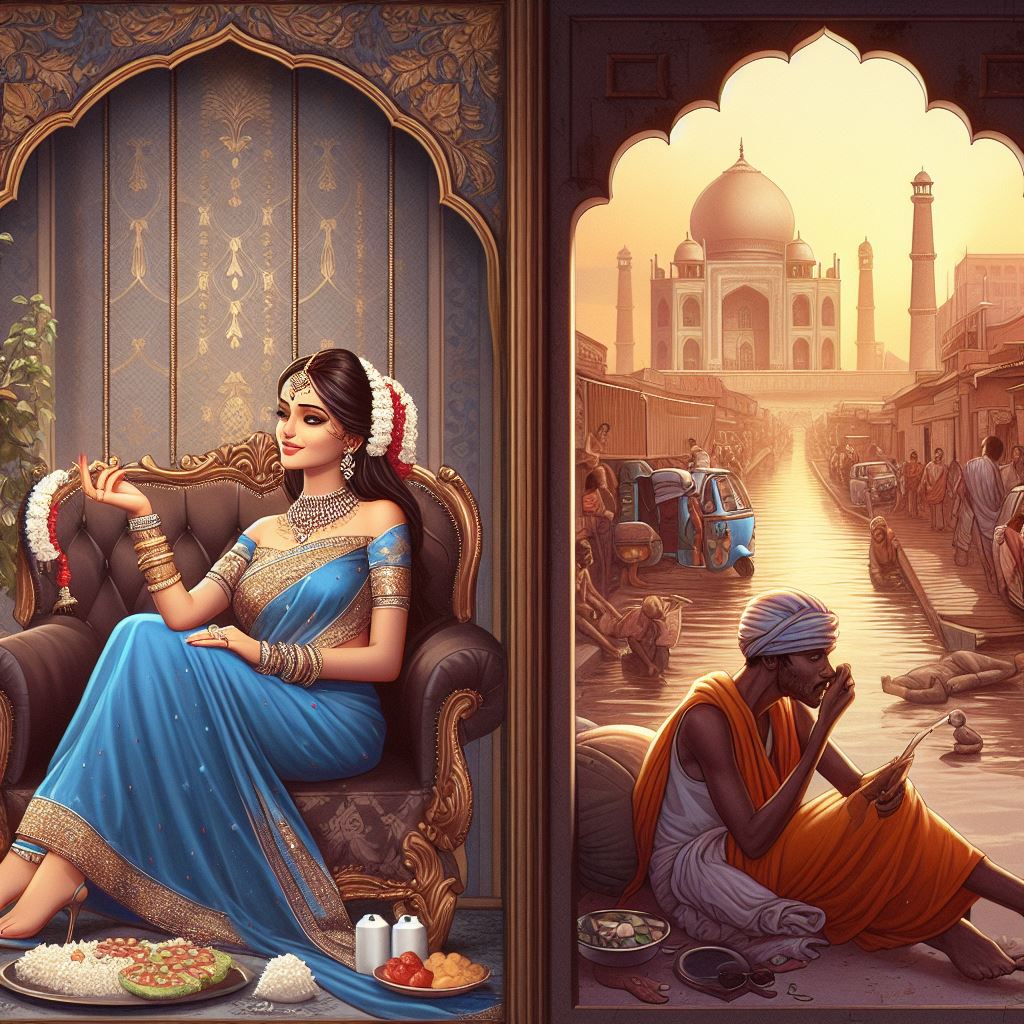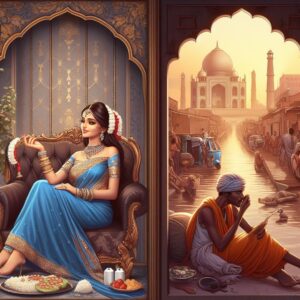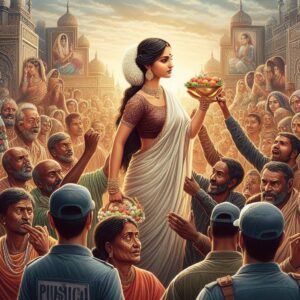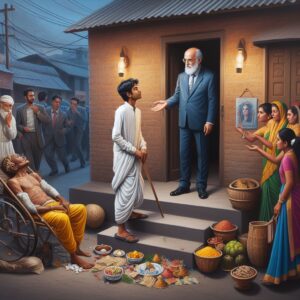1. “Caste and Economic Frontiers” book written by –
a) W.H. River
b) G.S. Ghurye
c) F.G. Bailey
d) Majumdar
ans: (c)
2. Where did the Andre Beteille conduct his fieldwork for his study of “Caste, Class and Power” book ? –
a) Rampura
b) Kishangari
c) Sripuram
d) Toda
ans: (c)
3. Find out name the author of the book “Caste in Modern India and Other Eassys” ?
a) M.N. Srinivas
b) S.C Dubey
c) Andre Beteile
d) G.S. Ghurye
ans: (a)
4. Who among the following studied caste system from historical, comparative and integrative perspective ?
a) D.P. Mukherjee
b) R.K. Mukherjee
c) M.N. Srinivas
d) G.S. Ghurye
ans: (d)
5. Which among the following is the open stratification ?
a) Caste
b) Religion
c) Ethnicity
d) Class
ans: (d)
6. Who among the following is not associated with “Attribution analysis of Caste” ?
a) G.S. Ghurye
b) J.H. Hutton
c) M.N. Srinivas
d) John Hick
ans: (d)
7. Who said that class relations are legitimised and sanctioned by caste system ?
a) Max Weber
b) Karl Marx
c) Andre Beteille
d) Raymond Aron
ans: (b)
8. Who has given three different charateristics of caste: Stratification, Cultural Pluralism and Interation ?
a) F.G. Bailey
b) Barths
c) Bereman
d) H.J. Nieboer
ans: (c)
9. Which of the following is not true about caste in India ?
a) Caste is an endogamous
b) Caste is hierarchical division of society based on achievement
c) Caste system was imposed restriction on social relations.
d) Caste system was imposed on food habits.
ans: (b)
10. Caste system …………………… in nature.
a) Contradiction
b) Hierarchical
c) Symmetrical
d) Horizontal
ans: (b)
11. Casteism mean
a) Bias in favour of one’s own caste
b) Bias in favour of own caste and against other castes
c) Bias against every caste
d) Bias in favour of few caste
ans: (b)
12. A marriage of a women of a so-called lower caste status with a man of so-called hiegher caste status is referred to as
a) Hypogamy
b) Endogamy
c) Serial Monogamy
d) Hypergamy
ans: (d)
13. Who authored the book “Castes of Mind: Colonialism and the making of Mordern India” ?
a) B.R. Ambedkar
b) Nicholas Dirks
c) Herbert Risley
d) Celestin Bougle
ans: (b)
14. Poin out the name of sociologist who wrote the book “Caste and Race in India” ?
a) A.R. Desai
b) G.S. Ghurye
c) Louis Dumont
d) None of above
ans: (b)
15. Who among following holds the vciew that an “Indian Tribe” as converted to Indian caste when it loses a territorial meaning and social significance ?
a) Max Weber
b) D.N. Majumdar
c) T.N. Madan
d) J Hutton
ans: (a)
16. The perpective which understands the society through conditions of subordination of people belonging to different castes is called ?
a) Indological perpective
b) Civilizational perpective
c) Subaltern perpective
d) Conflict perpective
ans: (c)
17. Among the following which book is not written by M.N. Srinivas?
a) India’s Changing Village
b) The Remembered Village
c) India’s Village
d) Social Change in Modern Village
ans: (a)
18. Who among the following has thought of Indian Society as a “Caste Society” ?
a) Andre Beteille
b) Louis Dumont
c) Murdock
d) None of these
ans: (b)
19. Which of the following characteristics of the caste system were not emphasized by G.S. Ghurey ?
1. Segmental division
2. Hierarchy
3. Open System
4. Achieved
5. Pollution and Purity
Choose the correct answer –
a) 1 & 2 only
b) 2 & 5 only
c) 3 & 4 only
d) 1 & 5 only
ans: (c)
20. In his famous work on the changing stratification of a Tanjore Village, Andre Beteille observed the changes in –
a) Caste system
b) Class system
c) Power system
d) All of these
ans: (d)
21. Which of the following is not the characteristics of a Caste –
a) Purity and Pollution
b) Colour and beauty
c) Hierarchy
d) Immortality
ans: (b)
22. According to Weber , caste is an example of –
a) Class
b) Status
c) Party
d) Authority
ans: (b)
23. Which article of the Indian Constitution forbids the practice of “Untouchability” in any form ?
a) Article 17
b) Article 22
c) Article 45
d) Article 216
ans: (a)
24. When a caste preponderance over others by virtue of its numerical, economic and political strength in a region, it is called –
a) Dependent Caste
b) Depressed Caste
c) Dominate Caste
d) Divergent Caste
ans: (c)
25. Which of the following Sociologist are connected with the racial theory related to the origin of caste system?
a) Nesfield and G.S. Ghurye
b) Herbert Risley and G.S. Ghurye
c) J.H. Hutton and D.N. Majumdar
d) Louis Dumont and Nesfield
ans: (b)
26. Who did interaction analysis of caste system?
a) Louis Dumont
b) Surajit Singa
c) Srinivas
d) D.P. Mukherjee
ans: (a)
27. The word “Dalit” indicates:
a) Struggle for power
b) Oppressed and exploited
c) Both a & b
d) None of these
ans: (b)
28. Who views caste as a segmentary system of Indian Society?
a) S.C. Dube
b) D.P. Mukherjee
c) M.N. Srinivas
d) Irawati Karve
ans: (c)
29. Who divided castes into Brahmin, non Brahmin and Adi Dravida –
a) Louis Dumont
b) Andre Beteille
c) M.N. Srinivas
d) W.E.B. Dubois
ans: (b)
30. The concept of substantialisation of caste was fully developed by –
a) Louis Dumont
b) Andre Beteille
c) Dipankar Gupta
d) Srinivas
ans: (a)
31. In the Indian context, which statement hold true –
i. Caste system is entering into Politics.
ii. Caste system is declining but caste is becoming strong.
iii. Class and caste system are overlapping.
iv. Caste is withering away.
a) i
b) ii
c) iii
d) iv
ans: (a)
32. Which one of the following distinguishes a tribe from caste?
a) Trace of descent from a common ancestor
b) Observances of rules of endogamy q
c) Living in a common territory
d) Living in upcountry regions
ans: (c)
34. How is social mobility traditionally perceived in the caste system –
a) Easy and Frequent
b) Difficult and rare
c) Dependent on Education
d) Dependent on Economic success
ans: (b)
35. What role does the concept of “Jati” play in the caste system
a) Economic classification
b) sub caste
c) Educational Hierarchy
d) Occupational segregation
ans: (d)
36. Which of the following is the important distinction between caste and class ?
a) Caste involves superiority-inferiorty feeling but class does not.
b) Caste is traditionally endogamous but class is not.
c) Caste permit vertical mobility but class permits horizontal mobility.
d) Caste is divided into sub-caste while class is not divided into sub-classes.
ans: (b)
37. Which of the following is not a feature of caste system ?
a) Hierarchy
b) Hereditary Occupation
c) Exogamous Marriage
d) Untouchability
ans: (c)
38. “Caste is brahmanic child of Indo-Aryan culture cradled in the land of Ganges and then transferred to other oarts of India.” – Whose statement is this ?
a) D.P. Mukherji
b) M.N. Srinivas
c) G.S. Ghurye
d) Louis Dumont
ans: (c)
39. The system of caste stratification is based on –
a) Rebirth stratification
b) Chaturvarna
c) Varnashrama System
d) Sept
ans: (b)
40. The main difference in between the Caste and the Class is that –
a) Caste should be operates in a classless society and class should be operates in a casteless society.
b) Caste is always remained closed and class is always open.
c) The status given to an individual is ascribed in the case of caste, wheres in class it is achieved.
d) The individual suffers most in the case of caste whereas in class he does not.
ans: (b)
41. According to M.N. Srinivas , the real unit of Caste System is –
a) Family
b) Clan
c) Sub-Caste
d) Verna
ans: (c)
42. According to Srinivas, “Sanskritization is a process by which a low Hindu caste or trail or other group change its customs, rituals, ideology and way of life in the direction of”
a) Clean caste
b) Untouchable caste
c) Unclean caste
d) Twice born caste
ans: (d)
43.According to whom purity and pollution is an important criteria of caste hiererchy.
a) Andre Beteille
b) G.S. Ghurye
c) M.N. Srinivas
d) Louis Dumont
ans: (d)
44. Max Weber categorized caste as a –
a) Closed group
b) Community
c) Ethnic group
d) Endogamous group
ans: (a)
45. Andre Beteille is the exponent of
a) Functional view of caste
b) Structural view of caste
c) Cultural view of caste
d) Political view of caste
ans: (c)
46. Who stated that caste and varna are to be understood with relationship of hiearchy and power ?
a) Srinivas
b) Dumont
c) D.P. Mukherjee
d) A.R. Desai
ans: (b)
47. Who among the following stated that caste is nothing more than, “Systematization of Occupational differentiation” ?
a) G.S. Ghurye
b) M.N. Srinivas
c) Louis Dumont
d) S.C. Dube
ans: (b)
48. Who among the following has stated that caste is not form of strategic but it is the special form of inequality, where he identifies that hierarchy is the essential value underlying of caste system ?
a) M.N. Srinivas
b) S.C. Dube
c) Irawati Karve
d) Louis Dumont
ans: (d)
49. The word caste is derived from –
a) India ‘Jati’
b) Spanish ‘Casta’
c) English ‘Caste’
d) French ‘Caste’
ans: (b)
50. Who said that caste is an “Advanced status group” ?
a) Andre Beteille
b) T.K. Oomen
c) Max Weber
d) B.R. Ambedkar
ans: (c)
◆◆◆◆◆◆◆◆◆◆◆◆◆◆◆◆◆◆◆◆◆◆◆◆◆◆◆◆◆◆◆◆◆◆◆◆◆◆◆◆◆◆◆◆◆◆◆◆
○Like our Facebook page
○ For any Doubt contact us
https://www.facebook.com/hubsociology/
– By HUB SOCIOLOGY




Hi there,
I hope this message finds you well!
I’d like to offer you a no-cost tool that has the potential to transform your business: The Chat GPT Quick Guide for Success.
This manual is filled with actionable prompts and tips to optimize your business processes, improve customer connections, and develop impactful content in a short time.
It’s a straightforward approach to discover how AI platforms like Chat GPT can revolutionize your routine and increase output.
Grab your free copy here: https://bit.ly/expertaisuite25
I can’t wait to hear your feedback.
Best regards,
In case you don’t want to be receiving further emails from us, simply reply to us saying “No Thank You”.
34 Rue De L’aigle, Hillburn, NY, USA, 93210